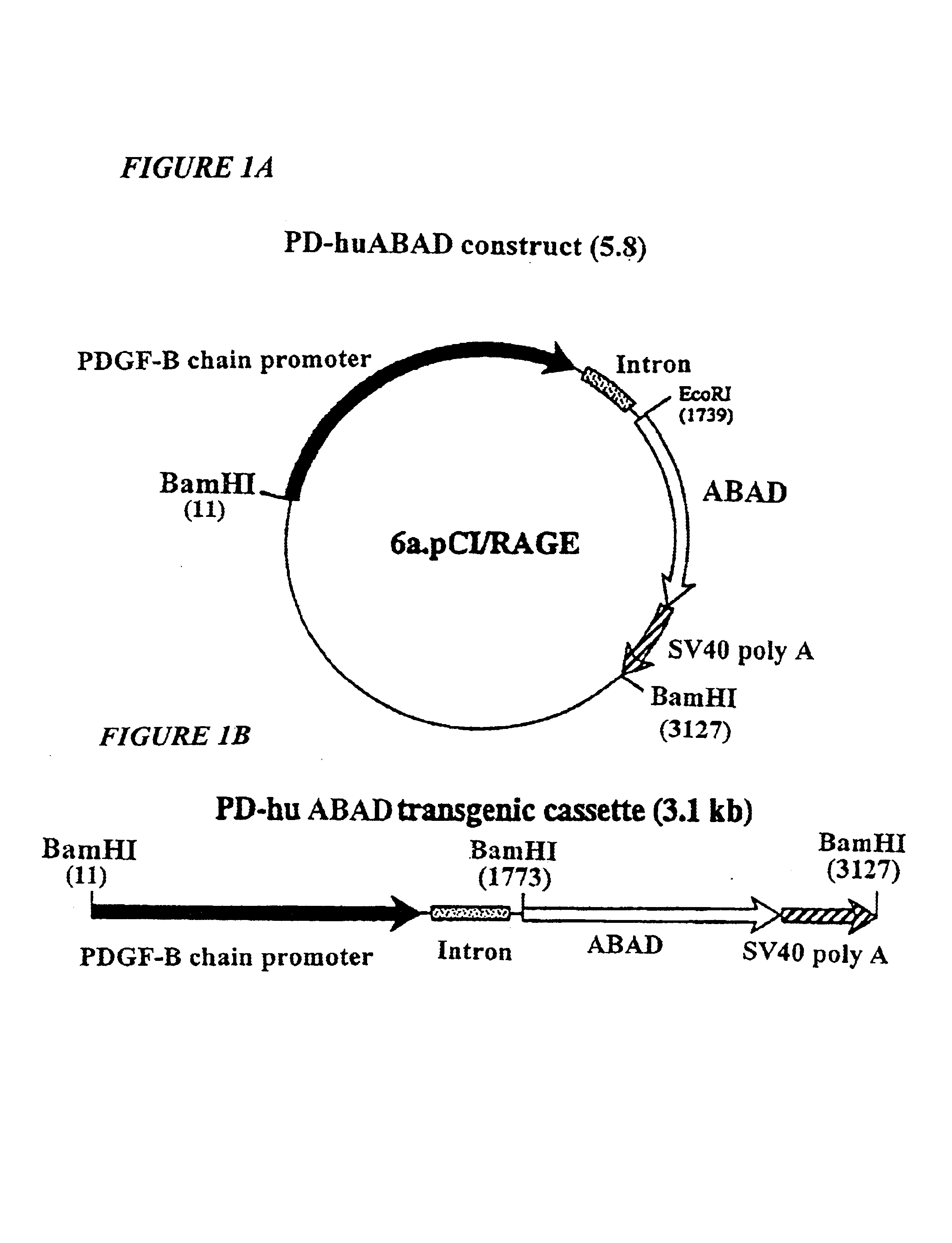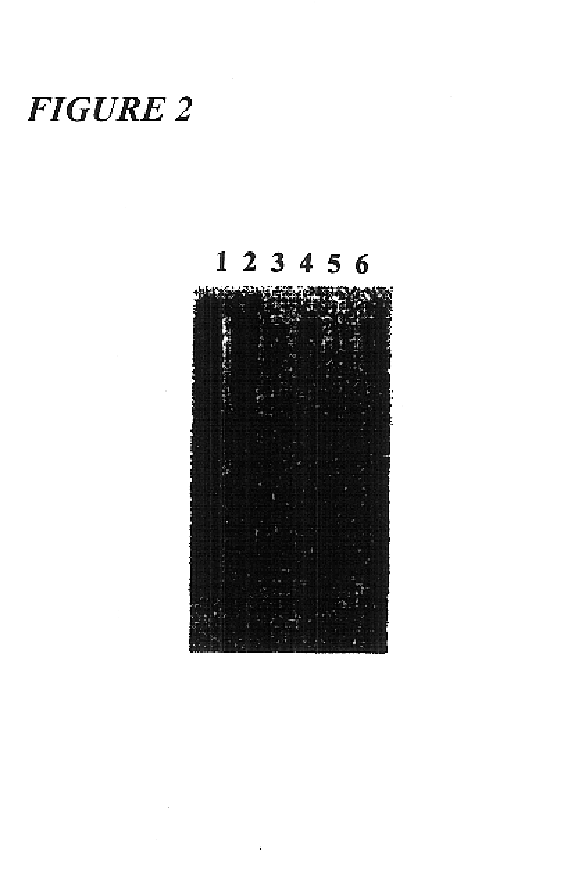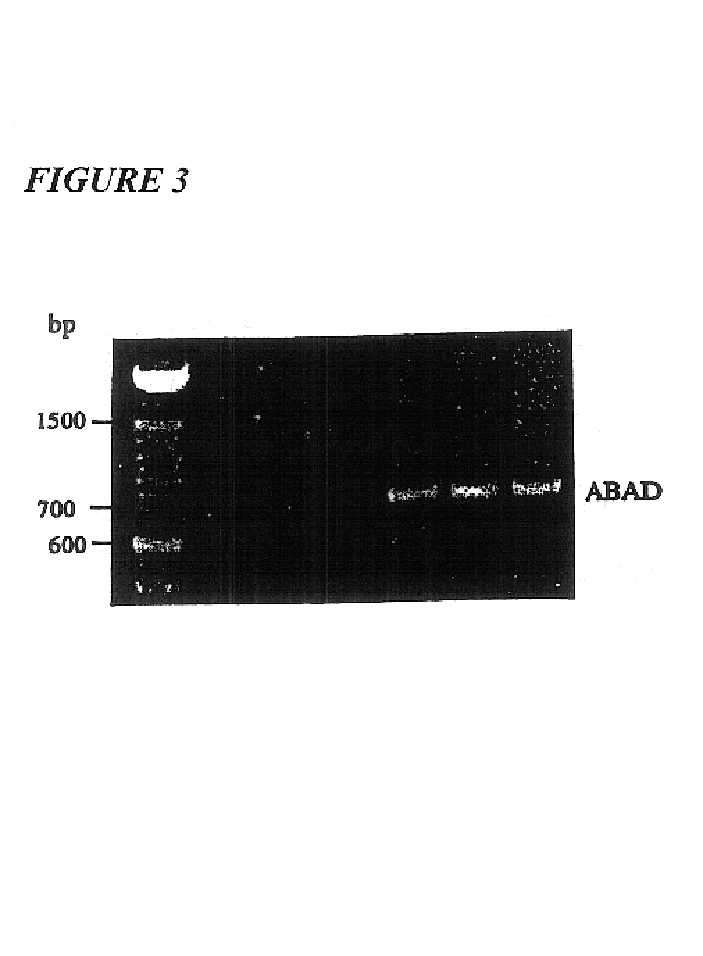Transgenic mice over-expressing amyloid-beta alcohol dehydrogenase (ABAD) in brain as model of alzheimer's disease and uses thereof
a technology of amyloidbeta and alzheimer's disease, which is applied in the field of transgenic mice overexpressing amyloidbeta alcohol dehydrogenase (abad) in the brain as a model of alzheimer's disease, can solve the problems of patient's loss of identity, autonomy, freedom, etc., and achieves the reduction of basal synaptic transmission, preventing or reducing the onset or progression of alzheimer's
- Summary
- Abstract
- Description
- Claims
- Application Information
AI Technical Summary
Benefits of technology
Problems solved by technology
Method used
Image
Examples
example 1
Generation of Transgenic Mice With Targeted Overexpression of Amyloid-beta Peptide Alcohol Dehydrogenase (ABAD) in Neurons
[0115]This section describes a means of making transgenic mice with targeted overexpression of ABAD in neurons using the PDGF B-chain promoter and the cDNA for human full-length ABAD. The mice, termed “Tg PD-ABAD,” which have been produced provide a model system for determining the consequences of heightened ABAD expression in neurons, and could serve as an important model system to test ABAD inhibitors. Cross-breeding of Tg PD-ABAD mice with other animals, such as those expressing a transgene causing overexpression of mutant amyloid precursor protein (resulting in increased production of amyloid-beta peptide) provide a model system to assess the effects of ABAD in an Aβ-rich environment in the brain relevant to Alzheimer's disease. In addition, isolation and culture of embryonic neurons from Tg PD-ABAD mice allows study of the consequences of increased levels of...
example 2
Double Transaenic Mice Overexpressing ABAD and mutAPP (V717F, K670M, N671L) Show an Impairment of Hippocampal Long-Term Potentiation
[0153]Amyloid-beta peptide (Aβ) is the principal component of the extracellular deposits in Alzheimer's disease. However, means by which Aβ perturbs cellular functions are still unknown. It has been shown recently that Aβ binding alcohol dehydrogenase (ABAD), in an Aβ-rich environment is permuted from a protective enzyme to a cofactor enhancing Aβ toxicity. In order to study the interaction of ABAD with mutAPP, double transgenic mice overexpressing both proteins in neurons under control of the PDGF-B chain promoter have been generated. Here, an investigation of basal synaptic transmission and synaptic plasticity is shown in hippocampal slices from these animals. To measure basal synaptic transmission, we generated input-output curves by plotting the stimulus voltage against the slope of the field EPSP. It was found that a 47% reduction in basal synaptic...
example 3
Enhanced Neuronal Stress and Cytotoxicity in Double Transgenic Mice With Targeted Overexpression of ABAD and Mutant Amyloid Precursor Protein (mutAPP)
[0154]Amyloid-beta peptide binding alcohol dehydrogenase (ABAD) is an intracellular enzyme capable of binding amyloid-beta peptide and promoting cell stress in vitro. To examine properties of ABAD in vivo, transgenic (Tg) mice overexpressing ABAD under control of the PDGF B chain promoter (Tg PD-ABAD) were made. These animals demonstrated increased ABAD antigen in neurons of cerebral cortex and hippocampus. Tg PD-ABAD mice were crossed with animals overexpressing a minigene encoding hAPP 695, 751 & 770 bearing mutations linked to familial Alzheimer's disease (Tg hAPP) to generate progeny which are double transgenics (Tg PC-ABAD / hAPP). By 4 months of age, Tg PD-ABAD / hAPP mice displayed increased neuronal stress, elevated 4-hydroxynonenal immunoreactivity (3-fold increased; p<0.01) and heme oxygenase type 1 (3-fold) were observed in cere...
PUM
| Property | Measurement | Unit |
|---|---|---|
| Volume | aaaaa | aaaaa |
| Therapeutic | aaaaa | aaaaa |
Abstract
Description
Claims
Application Information
 Login to View More
Login to View More - R&D
- Intellectual Property
- Life Sciences
- Materials
- Tech Scout
- Unparalleled Data Quality
- Higher Quality Content
- 60% Fewer Hallucinations
Browse by: Latest US Patents, China's latest patents, Technical Efficacy Thesaurus, Application Domain, Technology Topic, Popular Technical Reports.
© 2025 PatSnap. All rights reserved.Legal|Privacy policy|Modern Slavery Act Transparency Statement|Sitemap|About US| Contact US: help@patsnap.com



